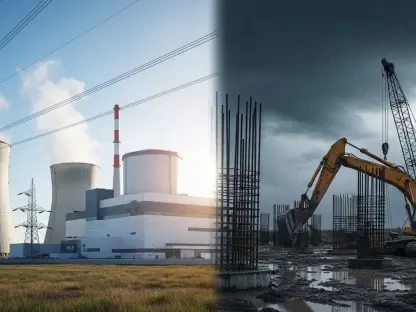The renewable energy industry is one of the most advanced industries to date, and thus, its range is expected to reach over two trillion US dollars by 2030. While it grows, it becomes increasingly aware that diverse leadership is needed.
Proactive policies for reaching parity in this area are imperative for building a more competent and diverse labor force and for new advancement and sustainability. If we examine the differentiated energy industry in more detail, it becomes obvious that this process has already begun.
The Journey Toward a More Inclusive Energy Sector Has Begun
Currently, the energy industry globally is transforming at a fast pace. The main aim is to make sure that everyone can use clean cooking solutions and energy services more effectively, with the help of renewable sources. Then it is no surprise that the energy workforce is expected to grow from 11 million workers to 42 million by 2050. Therefore, if humanity really wants to achieve high climate goals and help those less fortunate in our society, it seems we will need all the help we can get.
So let’s analyze the current workforce composition in energy industries to better understand how to utilize all sorts of talents.
Analyzing Workforce Composition in Energy Industries
When we look at the traditional energy sector, the gender balance reveals a stark disparity. The traditional energy sector workforce consists of:
22% female workers
78% male workers
In the renewable energy landscape, there’s a slight improvement, but the gender gap still exists, with the sector consisting of:
32% female workers
68% male workers
The sustainable energy sector includes many types of jobs. Not all of these jobs require higher education, but some require engineering or STEM-related (science, technology, engineering, and mathematics) qualifications.
Currently, many positions in sustainable energy are occupied by individuals with engineering backgrounds. Enhancing access to and interest in studying STEM fields is essential to ensuring equal opportunities in the future.
Existing roles within the sustainable energy sector are occupied by men, with women occupying only:
28% of STEM jobs
35% of non-STEM technical jobs
45% of administrative jobs
These statistics showcase the need for specific efforts to support women’s involvement in the energy sector, and the next segment highlights key initiatives fighting for this cause.
Key Initiatives Promoting Gender Equality
Some of these programs help brave pioneers navigate new careers, build confidence, and develop essential skills:
Mentorship Programs: Two great programs, the Women’s Energy Network (WEN) and the Global Women’s Network for the Energy Transition (GWNET), connect new and experienced leaders in the energy field.
Scholarships and Grants: There are many organizations and non-profit centers that offer scholarships to candidates who want to pursue a course in energy-related fields. Another program that empowers careers includes the Women in Renewable Energy (WIRE) scholarships.
Networking Events and Conferences: Events like the Women in Energy & Renewables Summit 2024 create terrific platforms for sharing experiences, learning from other admirable people in the industry, and establishing valuable connections. Such gatherings also emphasize the importance of female contributions to energy innovation.
Corporate Diversity Initiatives: Many renewable energy companies already have clear goals for diversifying their work environments. Corporate America is starting to establish concrete diversity targets and provide sensitization aimed at hiring and promoting members of the workforce from different groups across the ranks, from fresh hires to the C-suites.
Advocacy and Policy Change: The Gender Working Groups lobbying for equal wages for equal work, maternity/paternity leave, and programs that enhance work and family well-being in the energy sector. These are some of the efforts that are being made in the endeavor to open up the industry to more ladies.
Investing in Female Leaders: A Catalyst for Energy Transformation
The overall competitiveness of the energy sector depends on empowering all of its smaller components—which is the local support in this case. This starts with simply offering divergent groups comprehensive training and upgrade skill sessions. It is important for women to connect with other stakeholders and provide effective input as energy experts.
Promotion of STEM should be the focus, as most positions in the renewable energy sector demand specific knowledge. This approach not only enhances individual capabilities but also contributes to broader benefits for the energy sector:
Driving Innovation: Multicultural, multiracial, and gender-inclusive teams provide a great variety of strategies and are thus more effective. Companies with more than 30% of women in top positions are much more likely to perform better financially than those with 30% or fewer examples (Forbes). Research by the World Economic Forum shows that having a diverse management team leads to more innovation in developing products or services for the market, scoring 45% more revenue than their competitors.
Improving Decision-Making: Different studies show better outcomes when the idea of diversity comes into the picture. By divergent participation in managerial decisions, enterprises have the potential to improve their capability to realize and control strategic direction. Then, practical applications for the evolution of the energy sector can only follow.
Building a Sustainable Future: The transition to a more renewable future requires diverse skills and perspectives. Involving community builders is essential to ensure renewable energy benefits everyone and promotes social and environmental responsibility.
Role Models for Future Generations: Fostering female leaders in the energy sector is important for setting an example. When young girls watch women in leadership positions within renewable energy, they encourage themselves to pursue STEM careers.
An Inspiring Case Study
The OSCE released the Scholarship Master’s Program for Young Women in Renewable Energy on September 2 at the Kazakh-German University or DKU in Almaty, Kazakhstan through the announcement of the Office of the Co-ordinator of OSCE Economic and Environmental Activities.
The program started in 2023, is expected to help make energy companies more diverse and involve more ladies in the renewable energy industry.
The recipient (s) of this scholarship are young girls from Central Asia, Afghanistan, and Mongolia who will study for a two-year Master’s Degree in Strategic Management of Renewable Energy and Energy Efficiency at DKU.
The program is designed to empower female students in the energy industry in Central Asia. The program is funded by several countries, including Austria, France, Germany, Italy, Norway, and Poland. By investing in girls’ education, the OSCE is addressing the imbalance in the education sector and nurturing a new generation of leaders who can drive the transition to green energy in the region.
Conclusion
Gender diversity in the renewable energy sector should not only be upheld but is a business imperative that has flexible benefits. Embracing more feminine leadership styles can encourage creativity and strengthen communities, leading to necessary adaptations for a better world.
Statistics show that companies that commit to increasing diversity and improving gender balance create a more inclusive industry. They also enhance overall performance and profitability.
This approach highlights how urgency and efficiency can go hand in hand. When the next generation of leaders is prepared with an appreciation for their differences and talents, the resulting changes will be both effective and reflective of the diversity of the human race. What has already been achieved looks very encouraging, but there is still a long way to go. In partnership, we have the ability to champion the transformations required to create a strong, equitable, and sustainable energy system.









